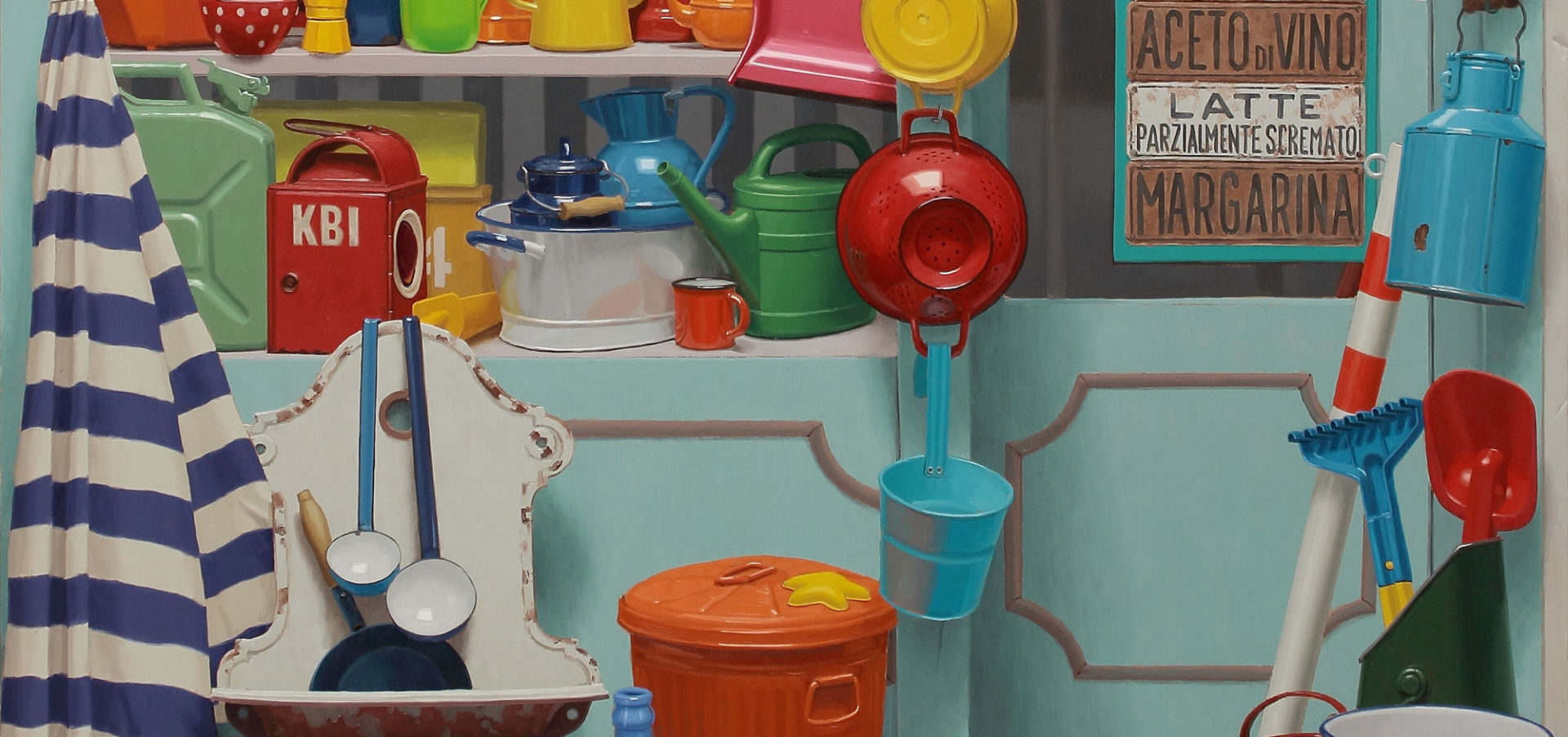June 19 – June 29, 2015 – A project for the White Room department
White Room
Via Vittorio Emanuele, 56
80073 – Capri (NA) – Italy
Opening Friday, June 29, at 18.30
The exhibition’s title refers to the title of his previous exhibition “L’invenzione del quotidiano”, (Invention of Everyday Life), presented last year in Positano. His current exhibition is a continuation of the concepts explored in the previous work.
The initial title derives from the name of an extraordinary book by Michel de Certeau, “L’invention du quotidien”. The reason why we decided to combine the work by Paolo Quaresima to the essay of the French academic is that the works of this artist seems to show how de Certeau’s theory is suitable to interpret contemporary culture.
When, in our house, we keep items that we have inherited by our ancestors or have found in flea markets, and we combine them with other similar or contemporaneous items and put them in a new and different context – maybe modern – we carry out something that, unexpectedly, many other people do the same way. This action corresponds exactly to that creative space – as explained by de Certeau – that everyone carves out to escape the uniformity of mass culture.
In his paintings, Paolo Quaresima isolates details, puts items together, combines details and objects, in order to show this creative predisposition of the contemporary man, which is more and more present as the conforming pressure of global communication grows stronger.
“Behind” every single work by Paolo Quaresima there is a careful study of the composition geometry: the framing and the setting of each object comply with precise balances (golden ratio) and perspectival rules. Thanks to this underlying geometry, Quaresima is able to direct the viewer’s look, by emphasizing some objects rather than others. And among prominent subjects, there often are recurrent items which allow to group Quaresima’s paintings into series. There are transportation means: mostly the great classic means of the Italian motor culture of the Sixties; there are inward and outward passage places: doors, windows and balconies, full of details, that indicate a strange fusion between the simplicity of the traditional Mediterranean culture and the horror vacui of the ever-lasting Italian manneristic trend of adding “spirals” and “curls”. Groups of items are set in the corners of balconies, on window sills, to ideally represent the personality and nature of those people living the places across those passages.
In short, Quaresima’s painting shows an unsatisfied conflict between “classic” and “manner”, between polychromy and monochromy, between ancient and modern, collecting and hoarding: opposite categories that – by intersecting, connecting or separating each other, in harmony or in opposition – build the image or the metaphore of the many shades of the artist’s personality and of all the people whom he meets and whom he – somehow – decides to portray.


